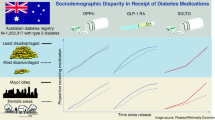Abstract
Introduction
Daily medication is the cornerstone of evidence-based therapy to reduce mortality and morbidity in patients with heart failure (HF). Up to 20% of Canadian patients pay for medications out of pocket. We sought to identify strategies that patients and prescribers can employ to reduce these costs.
Methods
We collected data from outpatient pharmacies in Hamilton, Ontario. We determined prices for different medications in each of the drug classes recommended for HF with reduced ejection fraction in the Canadian Cardiovascular Society’s guidelines. We examined differences in dispensing and delivery fees and inquired about other cost-saving strategies.
Results
We collected data from 24 different pharmacies, including a selection of hospital-based, independent, and larger chain pharmacies. In the most extreme scenario (i.e., 90-day prescription instead of a 30-day prescription and the least expensive generic drug instead of the most expensive brand name drug), total medication costs can differ by up to $495.56 per month. Costs were affected by choice of agent within a drug class, generic versus brand-name drug, quantity dispensed, dispensing fee, and delivery cost.
Conclusions
Prescription content, dispensing practice, and pharmacy choice can remarkably impact out-of-pocket costs for HF medications. Prescribers can reduce costs by writing 90-day prescriptions and choosing the lowest-cost generic drugs in each therapeutic class. Patients should consider the services received for their pharmacy dispensing fees, use free delivery services where needed, and request inexpensive generic drugs. Pharmacists can facilitate cost minimization without compromising therapeutic efficacy.

Similar content being viewed by others

References
Report from the Canadian Chronic Disease Surveillance System: Heart Disease in Canada. Public Health Agency of Canada. Ottawa, Ontario2018.
Ezekowitz JA, O'Meara E, McDonald MA, et al. 2017 comprehensive update of the Canadian Cardiovascular Society Guidelines for the Management of Heart Failure. Can J Cardiol. 2017;33:1342–433.
Morgan SG, Boothe K. Universal prescription drug coverage in Canada: long-promised yet undelivered. Healthc Manage Forum. 2016;29:247–54.
Morgan SG, Lee A. Cost-related non-adherence to prescribed medicines among older adults: a cross-sectional analysis of a survey in 11 developed countries. BMJ Open. 2017;7:e014287.
Baroletti S, Dell'Orfano H. Medication adherence in cardiovascular disease. Circulation. 2010;121:1455–8.
Allan GM, Lexchin J, Wiebe N. Physician awareness of drug cost: a systematic review. PLoS Med. 2007;4:e283.
Gorfinkel I, Lexchin J. We need to mandate drug cost transparency on electronic medical records. CMAJ. 2017;189:E1541–E2.
Harris PA, Taylor R, Thielke R, Payne J, Gonzalez N, Conde JG. Research electronic data capture (REDCap)—a metadata-driven methodology and workflow process for providing translational research informatics support. J Biomed Inform. 2009;42:377–81.
Harris PA, Taylor R, Minor BL, Elliott V, Fernandez M, O'Neal L, et al. The REDCap consortium: building an international community of software platform partners. J Biomed Inform. 2019;95:103208.
Census Profile, 2016 Census (accessed March 11, 2020, at https://www12.statcan.gc.ca/census-recensement/2016/dp-pd/prof/index.cfm? Lang=E.)
Gellad WF, Huskamp HA, Li A, Zhang Y, Safran DG, Donohue JM. Use of prescription drug samples and patient assistance programs, and the role of doctor–patient communication. J Gen Intern Med. 2011;26:1458–64.
Drug Interchangeability and Dispensing Fee Act, R.S.O. 1990, c. P.23 2016. (Accessed March 18, 2020, at https://www.ontario.ca/laws/statute/90p23.)
Musich S, Cheng Y, Wang SS, Hommer CE, Hawkins K, Yeh CS. Pharmaceutical cost-saving strategies and their association with medication adherence in a Medicare supplement population. J Gen Intern Med. 2015;30:1208–14.
Persaud N, Bedard M, Boozary AS, et al. Effect on treatment adherence of distributing essential medicines at no charge: the CLEAN Meds randomized clinical trial. JAMA Intern Med. 2019.
Heinze G, Hronsky M, Reichardt B, Baumgärtel C, Müllner M, Bucsics A, et al. Potential savings in prescription drug costs for hypertension, hyperlipidemia, and diabetes mellitus by equivalent drug substitution in Austria: a nationwide cohort study. Appl Health Econ Health Policy. 2015;13:193–205.
Vogel L. Drug pricing reforms promising but problematic. CMAJ. 2017;189:E899–900.
Morgan SG, Leopold C, Wagner AK. Drivers of expenditure on primary care prescription drugs in 10 high-income countries with universal health coverage. CMAJ. 2017;189:E794–E9.
Lloyd JT, Maresh S, Powers CA, Shrank WH, Alley DE. How much does medication nonadherence cost the Medicare fee-for-service program? Med Care. 2019;57:218–24.
Author information
Authors and Affiliations
Corresponding author
Additional information
Publisher’s Note
Springer Nature remains neutral with regard to jurisdictional claims in published maps and institutional affiliations.
Appendices
Appendix 1. Questionnaire







Appendix 2
Appendix
Appendix 3
Appendix 4
Rights and permissions
About this article
Cite this article
McIntyre, W.F., Belesiotis, P., McClure, G.R. et al. Strategies to Reduce Out-of-Pocket Medication Costs for Canadians Living with Heart Failure. Cardiovasc Drugs Ther 35, 1009–1023 (2021). https://doi.org/10.1007/s10557-020-07046-1
Accepted:
Published:
Issue Date:
DOI: https://doi.org/10.1007/s10557-020-07046-1



